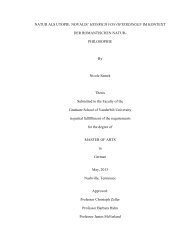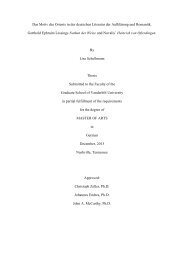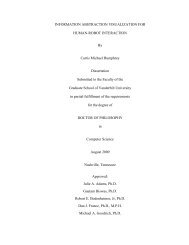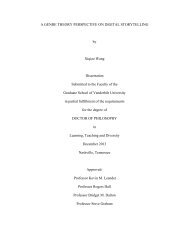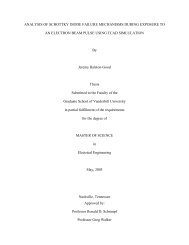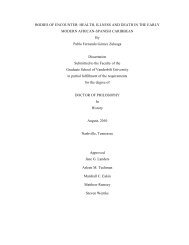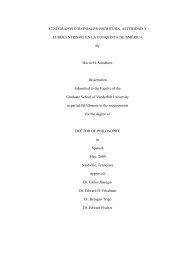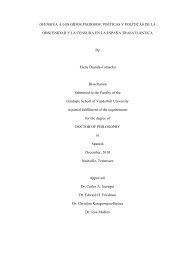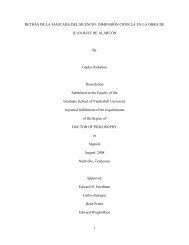EVIDENCE OF ACCRETION-GENERATED X-RAYS IN THE YOUNG ...
EVIDENCE OF ACCRETION-GENERATED X-RAYS IN THE YOUNG ...
EVIDENCE OF ACCRETION-GENERATED X-RAYS IN THE YOUNG ...
Create successful ePaper yourself
Turn your PDF publications into a flip-book with our unique Google optimized e-Paper software.
than the front-illuminated CCDs.<br />
Each of the 10 ACIS CCDs has square pixels 0.49 00 on a side, giving each CCD<br />
afieldofviewof8.3 0 . The total field of view is 16.9 0 by 16.9 0 for ACIS-I and 8.3 0<br />
by 50.6 0 for ACIS-S. A maximum of six CCDs may be used simultaneously during<br />
an observation. A typical configuration uses all six of the ACIS-S CCDs or all four<br />
ACIS-I CCDs along with the S2 and S3 CCDs (either to maximize the imaging area<br />
for spatially extended X-ray sources or to increase the likelihood of serendipitous<br />
observations of other X-ray events).<br />
When an X-ray photon (with an energy of at least 3.7 eV) strikes the (mostly)<br />
silicon CCD and is absorbed, electrons are liberated. The number of ejected electrons<br />
depends upon the energy of the incident X-ray photon. Due to the removal of an<br />
electron from a silicon atom, a net positive charge – a “hole” – is left behind. The<br />
freed electrons are then confined close to the interaction site via an electric field so<br />
as not to recombine with the holes. After an exposure, the confined charges are<br />
then transferred via “gate structures,” each of which consists of three electrodes that<br />
e↵ectively transfer confined charge from one pixel to another by rapidly varying the<br />
voltages in the electrodes. The gates are also what actually define the pixel boundaries<br />
in the CCD. When the transferred charge reaches the edge of the CCD, the charge<br />
is then transferred to a serial readout that then transfers each pixel charge to a local<br />
processor to determine the position and amplitude of any detected X-rays. Each full<br />
frame exposure lasts 3.2 seconds, e↵ectively giving ACIS a cadence of ⇠3.2 seconds.<br />
As opposed to a typical observation with an optical CCD where the user only sees a<br />
total flux in one filter after an entire observation, the high candence of ACIS allows<br />
41



